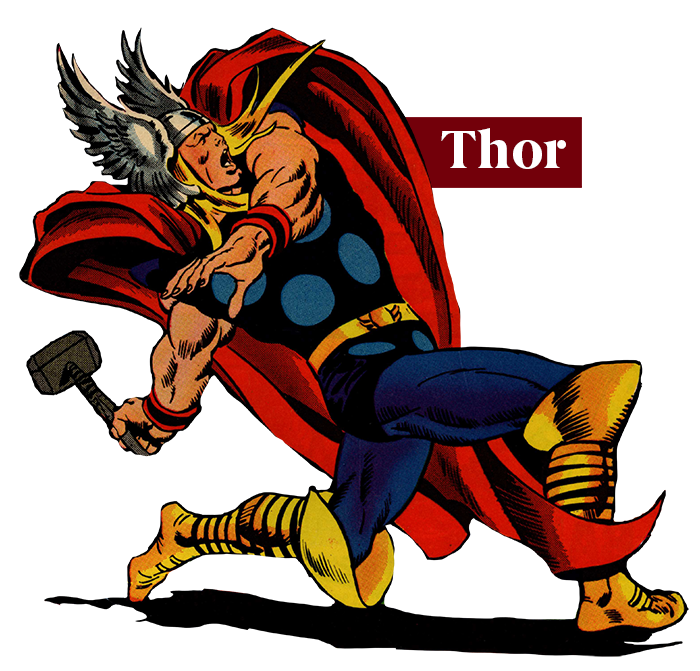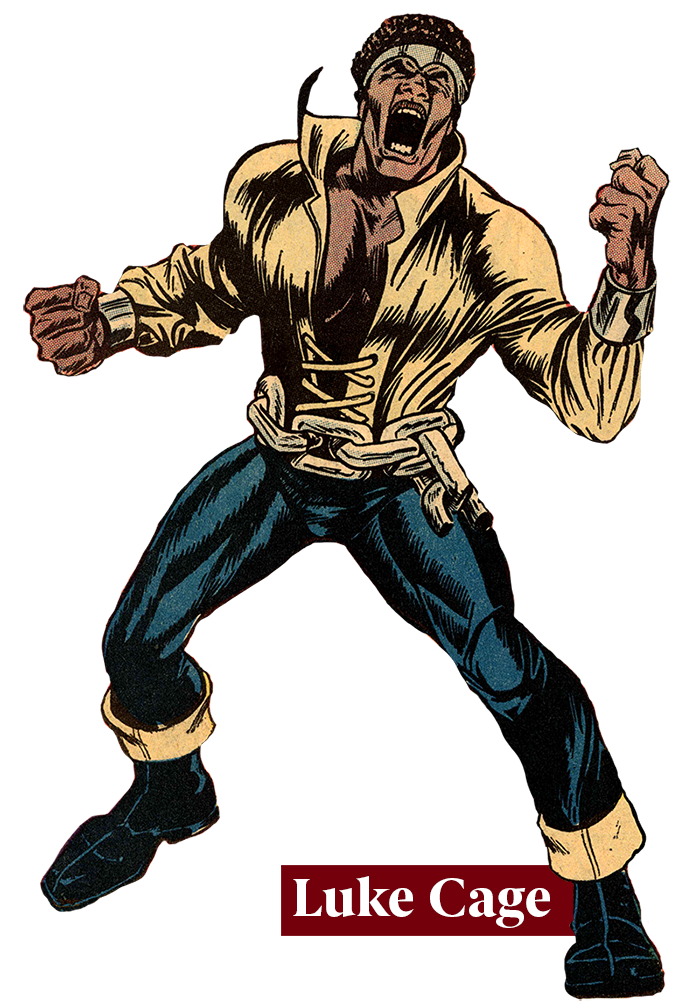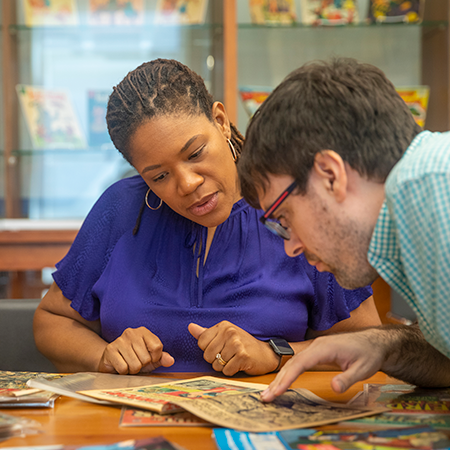Telling the American story — through comics
Massive new collection makes UofSC a destination for researchers and enthusiasts
Posted on: September 30, 2019; Updated on: September 30, 2019
By Carol J.G. Ward and Joshua Burrack, ward8@mailbox.sc.edu
Qiana Whitted sits engrossed by an issue of The Vault of Horror, a comic book published by EC Comics in the early 1950s. She is oblivious to the commotion around her — the hubbub of conversation as her university colleagues debate the cultural and academic significance of comic books, someone trying to get her attention to ask a question, people moving about the room and taking pictures.
Occasionally a slight smile crosses her face as she pulls out her phone to take a photo of a particularly entertaining panel. Whitted’s ability to escape so completely into The Vault of Horror conveys the allure of the Gary Lee Watson Comic Book Collection at the University of South Carolina Libraries Irvin Department of Rare Books and Special Collections.
“A comic book creator’s job in many ways is to get the reader to slow down and take in all that is on the page - to really appreciate not just the way the plot unfolds, but the way that the design and the artwork are trying to lead us through a storytelling experience,” says Whitted, an English professor and director of African American Studies who teaches a class about comic books, race and history. “There's so much here that if you flip through quickly, you're going to miss something important.”
The comic book collection donated to the university by lifelong enthusiast Gary Lee Watson of Ohio in spring 2019 includes more than 143,000 unique comic books, 20,000 magazines, 15,000 paperbacks and 5,000 pulp publications.
Telling the American story
“The acquisition has made the Irvin department one of the nation's top public repositories of comic books, positioning the University of South Carolina as a premier institution for comics studies,” says Elizabeth Sudduth, associate dean for special collections in University Libraries.
Library faculty estimate that UofSC’s comic book holdings are now among the top five for public institutions, making the university an intellectual center for researchers, students and the public who are interested in working with comic books and popular 20th century literature and culture. Because of Watson’s voracious appetite for comic books, the scope of his collection - it’s not just superheroes but also romance, war, sports, humor, Western and horror comics plus television-related publications - helps place many 20th century events and trends in historical context. While some may question the academic value of a comic book collection, UofSC faculty say it can help scholars understand 20th century history, war, science, art, fashion, social norms, gender expectations, musical trends and popular culture.

“I don’t think you can understand America or American popular culture without understanding comics,” says Mark Minett, an assistant professor jointly appointed in film and media studies and English, who teaches Introduction to Comics Studies as well as a class called Superheroes Across Media. “This collection certainly has a lot to tell us about the sociopolitical history of the United States; race, gender and class; how people understand what America means, etc. But it’s obviously also an incredible resource for understanding comics themselves - the multifaceted history of the medium and comics as a key part of popular culture.”
Others, like comics industry pioneer and pop culture historian Michelle Nolan, say that comic books forced Americans to reflect on their morality and their place in the world on issues such as civil rights. Nolan, who opened one of the first comic book stores in the late 1960s in San Jose, California, was the featured speaker for the August opening of the Watson collection exhibit. Comic books, she says, were some of the first media to positively respond to the civil rights movement and have African Americans in important roles. Whitted, who has written a book titled EC Comics: Race, Shock and Social Protest, focuses on representations of race and identity in her research and in the comics class she teaches in the College of Arts and Sciences. She points out that EC (which stood for Entertaining Comics) showed comics could be fun while having an important message.
“In between the stories about aliens and monsters and murderers, were these stories that EC called the ‘preachies,’ which were stories that talked about racism, anti-Semitism, red baiting, communism and other types of social and political issues that were current to the moment,” she says.
Michael Weisenburg, reference and instruction librarian at the Irvin department, takes it a step further, saying that comics are the rare books of the future and makes comparisons to Shakespeare and Homer.
“People have been asking, ‘Shakespeare and comic books?’ Yes, exactly,” Weisenburg says. “They have that same emotional force and that same cultural force. They have the same audiences, too. People get all high culture, low culture nowadays, but Shakespeare was writing for the masses. It was drama; it was meant to excite and entertain people.”
A classroom resource
The collection will also be valuable in the classroom as faculty explore ways to incorporate them into the curriculum across disciplines and reframe the way students think about comic books beyond superheroes. Whitted, for example, looks at comics through a cultural studies lens, to emphasize the value of their storytelling and to show students how a range of experiences can be represented through different formal and aesthetic styles. Students, she says, may only have seen Avengers at the movie theater and only associate comics with a particular kind of story. In Whitted’s Race, Gender and Graphic novels class, for instance, students examine ways people of color are portrayed both in comic books and as creators behind the scenes. Whitted believes these stories can help develop empathy.
“A lot of students will get exposed to being in someone else’s shoes in a way that they have been nervous about or unfamiliar with, especially when you’re talking about difficult issues like race and racism,” she says.

Minett says that during the past 30 years comic books’ major genres have increasingly found ways to combine excitement and stimulation with the kind of thematic depth and complex storytelling prized by literary culture. In his class, students have the opportunity to gain deeper historical knowledge of the medium as an art form and an industry and to learn about its changing cultural status.
“As an art form, comics have drawn from film, television, prose, poetry and the visual arts as well as graphic design, pencil and ink drawing, lettering and fonts,” Minett says. “It’s really a complex and sophisticated medium even if the popular experience of it can be very straightforward.”
Weisenburg takes a literary approach to his use of comics in the classroom. For example, he may examine how classic stories, such as Alice in Wonderland, span across time through different versions of print media from a first edition novel to beautifully illustrated folio editions to comic book adaptations, including one given away by Wonder Bread to promote mass-produced white bread.
“If you want to come in and see Alice in Wonderland shilling for Wonder Bread, we have that,” he says, adding that he uses it to illustrate to students how beloved children's literature has been used to manipulate consumers over the course of the 20th century.
Faculty and librarians are already assessing the possibilities of how the collection can be used in almost any curriculum or discipline - even those that don’t seem to be an obvious fit. Whitted said she had a conversation with a biology faculty member about creating a crossover with Watchmen, using the issue in which Doctor Manhattan was radiated and reanimated.
A living legacy
Although some items may have restrictions as the collection is sorted, organized and cataloged, the public will have access to most. Watson gave his collection to UofSC because he wanted people to be able to work with and enjoy the comic books.
“I chose the University of South Carolina because they have promised to keep the collection together in perpetuity. It's taken all my life to put it together. Better it be made available to researchers and preserved,” he says.
Some of the most interesting and valuable comic books of all genres from the collection are on display in the Hollings Special Collections Library. They include Amazing Fantasy #15, Spiderman’s first appearance, which Watson says is one of the most valuable in his collection. This is a rare opportunity for the public to see these books, which normally are held in private collections and aren’t often on display. The exhibit will be open through Dec. 20.
“The Watson collection is going to be a part of many exhibits we put on from here on out, just because it ties into so many areas. It’s a tremendous resource for us and an amazing opportunity to engage in new scholarship,” says Irvin department cataloger David Shay.
That is gratifying for Whitted, who says when she first began doing research with comics, she felt she had to justify the work to colleagues, parents and administrators.
“I would remind them that Charles Dickens got his start in serialized fiction, publishing his work in installments the way that newspaper comic strips often are. I would cite the accolades of famous cartoonists, noting that Art Spiegelman won a special Pulitzer in 1992,” she says. “I would point out that there are difficult moments in history dealing with racism, anti-Semitism, the rights of women, LGBTQ individuals, and they've all been documented through the pages of comics. And I would use phrases like the ‘graphic novel’ because it sounds more legitimate.”
Now she says she has learned to own her interest in comics and is excited about the possibilities that the Watson collection brings for continued research into their value as a cultural reference.
Comics historian Nolan agrees: “This reflects why Gary's donation has such significance at a university. College students in the year 2100 will still be studying them for very real illustrations of what life was like 150 years earlier. ... Gary’s collection is a great example of this cultural imperative and importance. I call it a cultural imperative because I think it's really crucial that we know what the past was like.”
About the collection

Qiana Whitted, director of African American studies, and David Shay, cataloger for University Libraries, are excited about the possibilities for how the Gary Watson Comic Book Collection can be used in curriculum, for research and exhibits and for understanding 20th century popular culture.
In 2018, Jim van Dore, an English professor at Old Dominion University in Virginia and comic book aficionado, helped his friend Gary Watson list his comic book collection on the Ex Libris list serv for rare books. Faculty in the Irvin department saw the listing and immediately went into action, contacting van Dore, who was the intermediary for Watson, and eventually speaking with Watson himself.
Earlier this year, Watson gifted his massive comic book collection to the university, where it could remain intact, be preserved and made available for scholars and researchers. Watson says his favorite item in the collection is Walt Disney’s Zorro #8, which was the first comic he saved in the late 1950s.
University Libraries’ staff made several trips to Ohio with two 26-foot moving trucks to bring the 18-ton collection to South Carolina. The collection of about 180,000 comic books and other materials encompasses all genres of comics, including Westerns, military, romance, sports and religion.
An exhibit featuring highlights of the collection will be open through Dec. 20.
“These things are ephemeral,” says Michael Weisenburg, reference and instruction librarian at the Irvin department. “People bought them; they read them. Most people didn't keep them. Some people, like Gary, kept a lot of them. He kept up with just about everything. He was one of the very few people who collected the old stuff and the new stuff. This makes the collection perhaps the most complete available anywhere with regard to variety from the 1930s to 2010.”
Tour the exhibit with a curator
If you’d like a free, curator-led, deep dive tour through the Four Color Fantasies
exhibit for your campus or community-based class or group, contact David Shay at shayd@mailbox.sc.edu or 803-777-0296.
For the classroom
If you’re a UofSC faculty member, we’d enjoy helping you integrate comics into your existing curriculum or help develop a future syllabus. For assistance, contact Michael Weisenburg at weisenbu@mailbox.sc.edu or 803-777-2721.